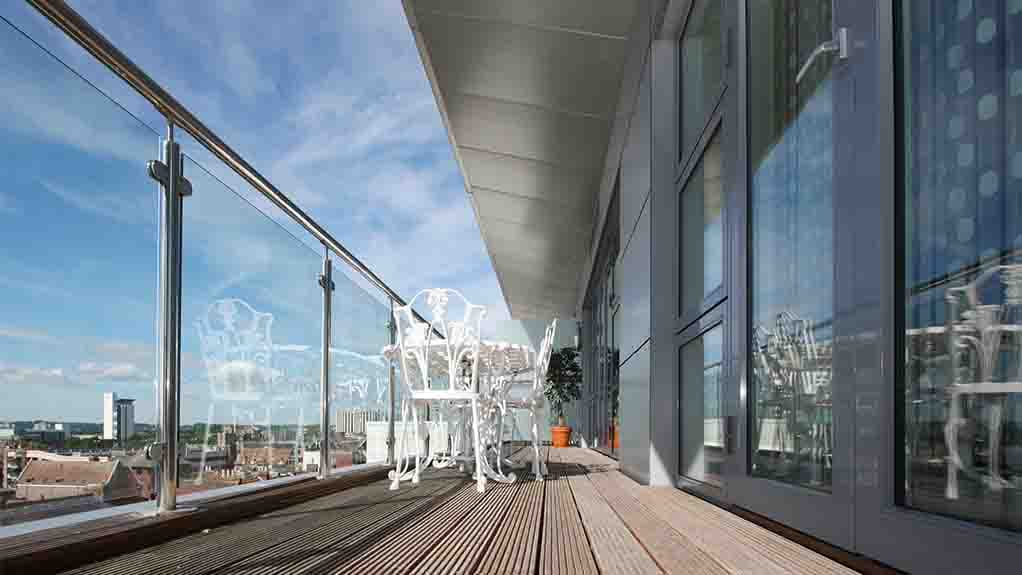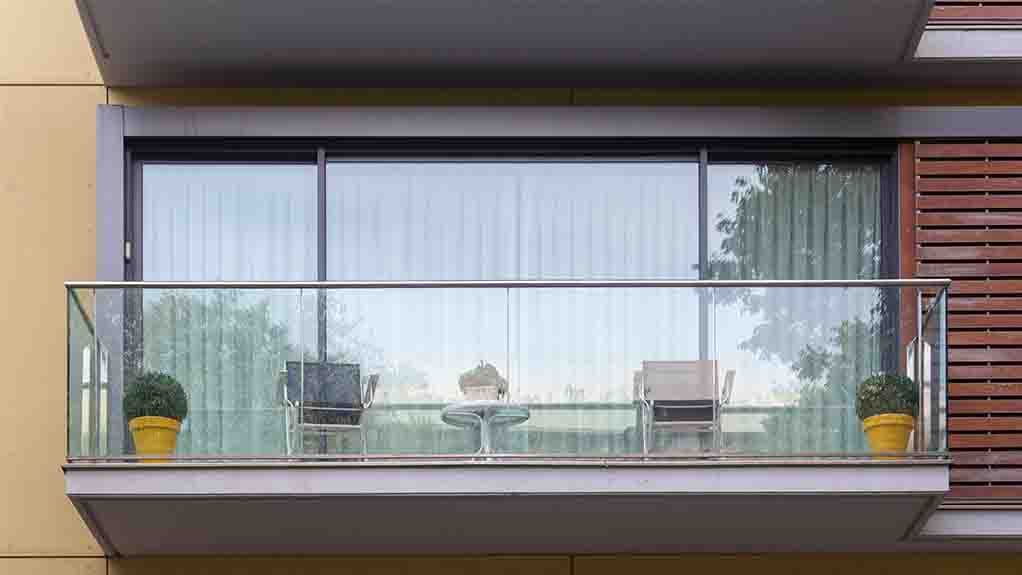Glass Railing vs Iron Railing Comparison Table
| Aspect | Glass Railings | Iron Railings |
|---|---|---|
| History | Used since the 18th century, gained popularity due to its flexibility and ability to provide unobstructed views. | Used since Ancient Rome for both decorative and functional purposes. Known for its durability and strength. |
| Types | Made from tempered safety glass, laminated safety glass, or cast acrylic panels. | Available in steel, aluminum, bronze, and wrought iron designs. |
| Aesthetics | Offers an elegant, modern look with an uninterrupted view and considerable customization options. | Provides a timeless, classic look with a variety of styles and customization options. |
| Resistance & Durability | Strong and durable but less resistant to elements than iron. Can suffer from discoloration over time if exposed to UV light or become brittle and break if exposed to too much cold. | Known for their strength and stability. Highly resistant to all sorts of weather conditions. Can last for decades when properly cared for. |
| Cost | Generally more expensive due to their customizable design possibilities and ease of installation. | More affordable but may require more complicated installation due to their weight. |
| Safety & Security | Provide transparency and unobstructed view. Less likely to corrode than iron but can be easily broken if not installed properly. | More likely to deter potential intruders due to their strength and durable nature. Can corrode and rust over time if not properly maintained. |
| Maintenance | Require periodic cleaning to keep them clear and free of dirt, dust, and debris. | Require more frequent and intensive maintenance. Need to be checked periodically for rust buildup and painted every two to three years to protect them from corrosion and reduce rusting. |
Glass Railing vs Iron Railing: A Guide
When it comes to railings, there are two main types of materials used for installation: glass and iron. Deciding which one is better for your project can be a difficult choice. In this guide, we will compare these two popular railing materials by looking at their history, design types, aesthetics, resistance and durability, cost, safety and security, and maintenance.
By the end of this guide, you will have an understanding of the advantages and disadvantages of both glass and iron railings. This information will enable you to make an informed decision about what type of railing is right for your project.
Table of Contents
The History of Glass and Iron Railings
Throughout history, both glass and iron railings have been used in architecture. In Ancient Greece, marble and granite were used to construct protective railings for public buildings and palaces, while in Ancient Rome, iron was used for both decorative and functional railings. During the Renaissance, ornate iron balconies and staircases began to be seen in many European countries.

In the 18th century, glass began to be used in its place in more modern building designs. This enabled architects to create visually striking buildings which provided views of the exterior without completely obstructing it. Iron remained a popular material for railings but glass quickly gained traction due to its flexibility.
In the 19th century, both materials were used in tandem as glass panels became popular for use in staircases and balconies. By the 20th century, both materials had become widely used across Europe and the United States. As technology has progressed, so has the aesthetics and design options of glass and iron railings, resulting in an abundance of modern railing options available today.
Types of Glass and Iron Railings
When considering glass railing vs iron railing, one of the most important things to consider is the types of railings available. Glass and iron railings offer a variety of styles, colors, and sizes that can suit any application.
Glass railings can be made from tempered safety glass, laminated safety glass, or cast acrylic panels. Tempered glass railings are thick, strong, and impact-resistant, while laminated glass provides additional protection against UV light and other elements. Cast acrylic panels offer a unique transparency that can be used to create stunning visual effects.
Iron railings provide a classic look and are available in a wide variety of designs including steel, aluminum, bronze, and wrought iron. Steel railings are strong, durable, and rust-resistant, while aluminum is lightweight and low maintenance. Bronze and wrought-iron railings offer a timeless look with intricate detailing.
No matter which type of railing you choose, there are many options available to suit any application. Whether you are looking for a modern, sleek look or a more traditional aesthetic, glass and iron railings can provide the perfect solution.
Aesthetics
When it comes to aesthetics, both glass and iron railings have their advantages and disadvantages. Glass offers an elegant, modern look, while iron can often provide a more traditional, rustic feel.
Glass railings are often more visually appealing than those made from iron, as they allow for an uninterrupted view that does not block the natural light. The smooth surface of glass also ensures that no debris or dirt is able to accumulate on its surface, making for an aesthetically pleasing appearance. Additionally, glass railings offer considerable flexibility in terms of customization, making them suitable for any number of design needs.
Iron railings, on the other hand, provide a timeless, classic look that has been popular for centuries. Iron railings come in a variety of styles and can be customized to fit the decor of any home. They also offer greater durability and strength compared to glass, making them a suitable choice for areas with harsher weather conditions.
Ultimately, the choice between glass and iron railings comes down to personal preference. If you’re looking for an unobstructed view with a modern look, glass railings may be the better option. However, if you prefer a more traditional look, iron railings may be the way to go.

Resistant & Durability
When it comes to choosing a type of railing for your home, it’s important to consider the resistance and durability of each option. Glass and iron railings offer unique benefits and drawbacks in terms of their resistance and durability.
Iron railings are known for their strength and stability. The material is highly resistant to all sorts of weather conditions including wind, rain, snow and even extreme temperatures. Iron railings also last a long time when properly cared for and usually don’t need to be replaced for decades.
Glass railings are also strong and durable, though they are slightly less resistant to the elements than iron. In particular, they can suffer from discoloration over time if exposed to UV light, or can become brittle and break if exposed to too much cold. As such, it’s important to make sure that you take care of a glass railing to ensure it lasts as long as possible.
Both iron and glass railings require regular maintenance, though iron will likely need less frequent attention. Iron should be inspected and repainted every few years, while glass railings should have their seals checked yearly. Iron railings are also prone to rusting if not well-cared for, so it’s important to stay on top of any rust damage to prevent the railing from becoming damaged beyond repair.
Overall, while both iron and glass railings are highly resistant and durable, there are some differences in terms of the level of protection offered by each. When making a decision about which type of railing is best for your home, it’s important to consider the level of resistance and durability of glass and iron railings.
Cost Comparison
When it comes to choosing a railing for your home, one of the main factors to consider is cost. Both glass and iron railings can be expensive, so it’s important to weigh up all the different costs when making a decision.
Glass railings are generally more expensive than their iron counterparts, due to their customisable design possibilities and ease of installation. An average 6-foot glass railing system will cost between 3,000-4,000, with the cost increasing if you choose thicker glass panels or go for an even more customised design. Iron railings on the other hand are much more affordable – with an average 6-foot iron railing system costing around $1,500.
Installation costs should also be taken into account, as they can vary significantly depending on the complexity of the job. Glass railing systems are relatively lightweight, so they’re easy to install but may require extra labour costs for specialised tools. Iron railings are often more complicated to install, as they are heavy and require welding to secure them in place. On average, installation costs range from around 1,000-2,000 for both types of railings.
It’s important to remember that while there is an initial cost associated with both glass and iron railings, they can also add value to your home. Aesthetically pleasing and well-maintained railings can increase the value of your property, making it a worthwhile investment.
Safety & Security of Glass and Iron Railings
Glass and iron railings can both provide an effective safety and security solution to your home or facility, but each material has its own advantages and disadvantages when it comes to security. It is important to consider all factors before deciding which railing type is best suited to your needs.
Glass Railings
The main benefit of glass railings is their transparency and unobstructed view. This makes them ideal for locations where you need to be able to see through the railing, such as balconies, decks, porches, patios, and other areas where a clear view is important. Additionally, glass is less likely to corrode than iron, making it a more durable material. However, glass railings can be easily broken if not installed properly.
Iron Railings
Iron railings are more likely to deter potential intruders due to their strength and durable nature. Iron railings are also able to hold up against harsh weather conditions, making them a great option for outdoor use. The major downside to iron railings is that they can corrode and rust over time. Additionally, if not properly maintained, iron railings can become vulnerable to force or tampering.
Conclusion
When determining the best railing type for your home or facility, it’s important to take into account the level of security, resistance, aesthetics, and maintenance required. Both glass and iron railings offer unique benefits, and can provide an effective safety and security solution depending on the nature of your space and preferences.
Maintenance of Glass and Iron Railings
When choosing between glass and iron railings for your home, it is important to consider what kind of maintenance each material requires. With both types of railings, regular cleaning and maintenance is essential in order to keep them functioning well and looking their best.
Glass railings require periodic cleaning to keep them clear and free of dirt, dust, and debris. Regular wiping with a damp cloth or specialized glass cleaner can help to keep your glass railings looking their best. Depending on the type of glass, chemical cleaners such as glass window cleaners may be needed to cut through any grime or grease. However, for safety reasons, it is best to avoid using acidic or abrasive cleaners on glass railings.
Iron railings require more frequent and intensive maintenance than glass railings. Frequent cleaning with a rust-inhibiting cleaner will help to keep iron railings looking their best. Additionally, railing components made of iron should also be checked periodically for rust buildup and painted every two to three years to protect them from corrosion and reduce rusting. It is important to use paint specifically formulated for metal surfaces in order to prevent the buildup of rust.
Both iron and glass railings should be inspected periodically for signs of wear and tear. You should check for loose components or warped framing, and make sure that all screws and bolts are properly tightened. It is important to address these issues quickly in order to prevent further damage to your railings.
Final Thoughts
When it comes to choosing the right railing material for your needs, both glass and iron railings have pros and cons that should be considered. Iron railings are known for being reliable and durable, but they are often bulky and heavy, making installation a difficult process. Glass railings, on the other hand, are less expensive and offer a more modern aesthetic, while still providing the same level of safety and security as iron railings.
However, the installation of glass railings can be more complex and require special care during the installation process to ensure that the railing is secure. Additionally, glass railings require regular maintenance in order to keep them in good condition and to ensure their longevity. Ultimately, the choice between glass and iron railings will depend on your budget, the look that you’re going for, and the amount of effort that you’re willing to put into the installation and maintenance of the railing.
With all this in mind, it’s important to carefully consider which type of railing material is right for your project before making a final decision. Both glass and iron railings have their own unique benefits, and understanding the advantages and disadvantages of each option can help you make the best choice for your needs.
In conclusion, when selecting a railing for your home it is important to consider the differences between glass and iron railings. Glass offers a more modern look that may be ideal for certain homes while iron railings can provide a timeless traditional aesthetic. Both materials offer different levels of resistance and durability which should be considered before making a decision. Further considerations include cost, safety, and maintenance requirements. Ultimately, both types of railings have their own advantages and disadvantages and it is important to weigh all of these factors carefully before selecting a railing type.

References
References are important for any research-based post, and this post is no different. To ensure accuracy, it is essential to acknowledge other sources of information. Below are some useful external references which were used when creating this guide on glass railing versus iron railing:
• “Types of Deck Railings Alameda” (2019) from Decks in Alameda. https://decksinalameda.com/types-of-deck-railings-alameda/
• “Pros & Cons of Glass Railings for Decks” (2018) from Wagner Architectural Systems. https://wagnerarchitecturalsystems.com/pros-cons-glass-railings-decks/
• “How Much Does an Iron Railing Cost?” (2020) from RedFin. https://www.redfin.com/blog/how-much-does-an-iron-railing-cost/
• “How Often Should Railings Be Cleaned or Replaced?” (2020) from Real Simple. https://www.realsimple.com/home-organizing/cleaning/maintenance-tips/cleaning-and-maintaining-railings
These references have been selected due to their relevance to the topic of glass and iron railings. All sources are reliable, up-to-date sources of information that provide accurate data on design, cost, maintenance, and safety considerations relating to glass and iron railings.
Questions about Glass and Iron Railings
1. What are the pros and cons of glass railing vs. iron railing?
Glass railings have a modern, contemporary look, but can be more costly to install and maintain than iron railings. Iron railings provide a strong, durable option with minimal maintenance, but may not have the same modern aesthetic as glass railings.
2. How much do glass and iron railings cost?
The cost of glass and iron railings varies greatly depending on the size and scope of your project. Generally, glass railings are more expensive to install than iron railings due to the materials used and labor involved.
3. Are glass and iron railings safe and secure?
Yes, both glass and iron railings offer safety and security. It is important to ensure that all railings are installed correctly and meet local building requirements for safety and security.
4. How durable are glass and iron railings?
Both glass and iron railings are very durable and can last for many years with proper maintenance. Iron railings tend to be more durable than glass railings, as they are not prone to scratches or other wear and tear.
5. Is there maintenance required for glass and iron railings?
es, regular maintenance is necessary for both glass and iron railings. Glass railings require regular cleaning and inspections to ensure that there are no cracks or damage. Iron railings require periodic painting or staining to keep them looking their best.
6. What types of glass and iron railings are available?
There are many different types of glass and iron railings available, such as cable railings, glass panels, top rails, and picket railings. Each type of railing has its own unique advantages and disadvantages, so it’s important to research which type best meets your needs.
7. Does the installation process vary for glass and iron railings?
Yes, the installation process for glass and iron railings does vary. Glass railings usually require custom fabrication and installation by a professional contractor, while iron railings can be installed using prefabricated panels and posts.
